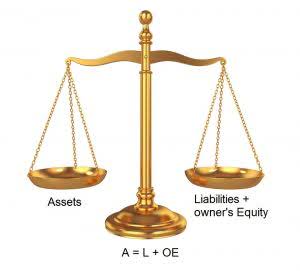Closing Entries Financial Accounting

The next step is to repeat the same process for your business’s expenses. All expenses can be closed out by crediting the expense accounts and debiting the income summary. If dividends were not declared, closing entries would cease atthis point. If dividends are declared, to get a zero balance in theDividends account, the entry will show a credit to Dividends and adebit to Retained Earnings. As you will learn in Corporation Accounting, there are three components to thedeclaration and payment of dividends.

Ask Any Financial Question
Temporary accounts are the type of accounts that must be opened and closed during these reporting cycles. Temporary accounts can be found in the accounting closing entries ledger, specifically the general ledger of accounts. This ledger is used to record all transactions over the specific accounting period in question.
- Accounts can be closed on a monthly, quarterly, semi-annual or annual basis.
- The closing entries are also recorded so that the company’s retained earnings account shows any actual increase in revenues from the prior year and also shows any decreases from dividend payments and expenses.
- Once this has been completed, a post-closing trial balance will be reviewed to ensure accuracy.
- We will debit the revenue accounts and credit theIncome Summary account.
- Notice how only the balance in retained earnings has changed and it now matches what was reported as ending retained earnings in the statement of retained earnings and the balance sheet.
- When the income statement is published at the end of the year, the balances of these accounts are transferred to the income summary, which is also a temporary account.
Movement on the Retained Earnings Account
Permanent accounts, also known as real accounts, do not require closing entries. Examples are cash, accounts receivable, accounts payable, and retained earnings. These accounts carry their ending balances into the next accounting period and are not reset to zero. Once all the adjusting entries are made the temporary accounts reflect the correct entries for revenue, expenses, and dividends for the accounting year. We can also see that the debit equals credit; hence, it adheres to the accounting principle of double-entry accounting.

Closing Entry: What It Is and How to Record One
Get granular visibility into your accounting process to take full control all the way from transaction recording to financial reporting. LiveCube Task Automation is designed to automate repetitive tasks, improve efficiency, and facilitate real-time collaboration across teams. By leveraging advanced workflow management, the no-code platform, LiveCube ensures that all closing tasks are completed on time and accurately, reducing the manual effort and the risk of errors.
Which of these is most important for your financial advisor to have?

Are the value of your assets andliabilities now zero because of the start of a new year? Your car,electronics, and furniture did not suddenly lose all their value,and unfortunately, you still have outstanding debt. Therefore,these accounts still have a balance in the new year, because theyare not closed, and the balances are carried forward from December31 to January 1 to start the new annual accounting period.
Ask a Financial Professional Any Question

As a result, the temporary accounts will begin the following accounting year with zero balances. It’s important to note that neither the drawing nor the dividends accounts need to be transferred to the income summary account. Since we credited income summary in Step 1 for $5,300 and debited income summary for $5,050 in Step 2, the balance in the income summary account is now a credit of $250. While these accounts remain on the books, their balance is reset to zero each month, which is done using closing entries. In this chapter, we complete the final steps (steps 8 and 9) ofthe accounting cycle, the closing process. This is an optional stepin the accounting cycle that you will learn about in futurecourses.

Step #1: Close Revenue Accounts
- If your company doesn’t have dividends then you won’t need to do this step.
- Closing all temporary accounts to the income summary account leaves an audit trail for accountants to follow.
- Essentially resetting the account balances to zero on the general ledger.
- In short, we can clear all temporary accounts to retained earnings with a single closing entry.
- If your business is a sole proprietorship or a partnership, your next step will be to close your income summary account.




